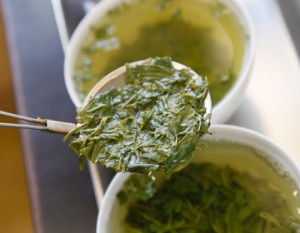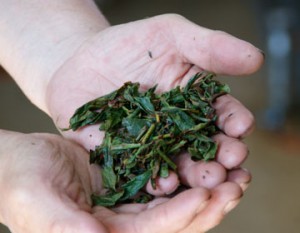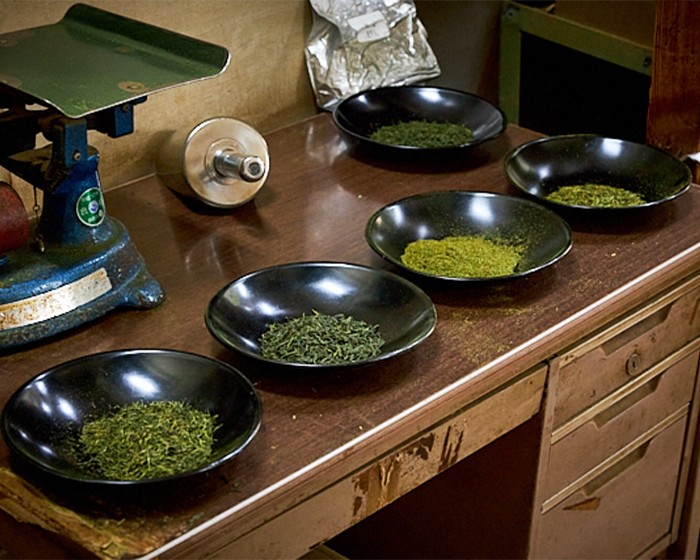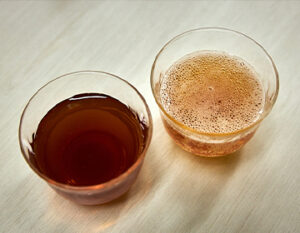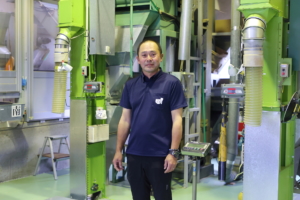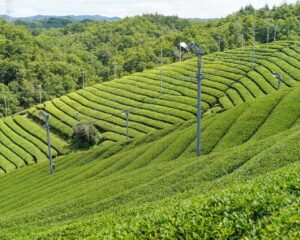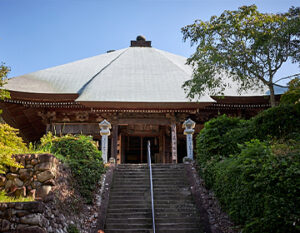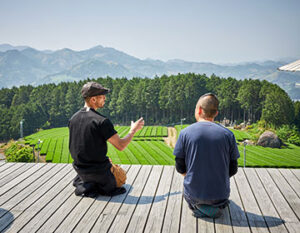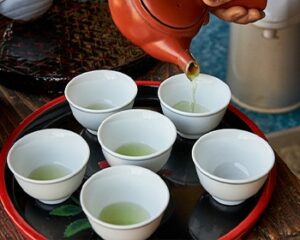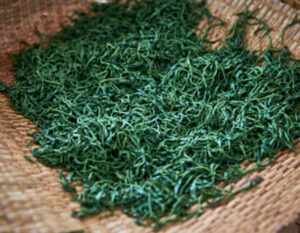Shizuoka tea has a different aroma and taste depending on its region of origin.Kawane tea is considered well-balanced with moderate bitterness and astringency, Kakegawa tea is characterized by its mild sweetness, and Tenryu tea is considered a high-class tea with its rich flavor.Among such Shizuoka teas, the oldest tea, which has been in existence for more than 800 years and is said to have been a favorite of Ieyasu Tokugawa, is Motoyama-cha, produced in the mountainous area upstream from the Abe and Warashina Rivers in Shizuoka City.The characteristic features of Motoyama-cha are its bright color, pleasant flavor, and depth of flavor.In Shizuoka, it is generally believed that tea leaves grown in coastal areas with a mild climate have a fresh aroma and a clean taste, while tea leaves grown in mountainous areas have a temperature difference, so leaves that photosynthesize during the day rest in the cool air at night, storing nutrients and bringing out their richness and sweetness.When you taste tea in various regions, you cannot hide your surprise at the many different types and flavors.
Kojima Tea Shop, where the traditional taste and aroma are passed down from generation to generation
Since its establishment in 1868, Kojima Chaten in Shizuoka City has been focusing on local teas, especially Motoyama tea, and has continued to introduce their charms to the rest of Japan.Kojima Kohei, the representative of Kojima Chaten, is well known in the prefecture as he was deeply involved in the establishment of the Japanese tea instructor system, and Yoshio Suzuki, a tea master who has obtained the highest tea appraisal skill level, Jyu-dan (tea master 10th dan), of which there are only a dozen in Japan, selects, blends, and commercializes the tea products.
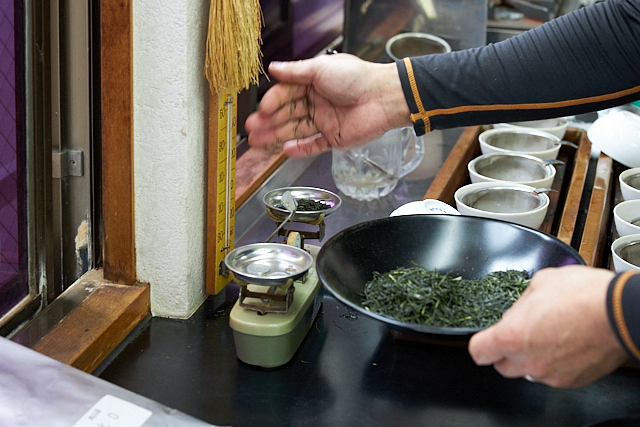
The tea master’s job is to buy tea leaves produced by farmers (rough tea = tea leaves that have been picked, steamed, rubbed, and dried by tea farmers), blend tea leaves that have their own characteristics, and process them into the final product through a variety of processes.He must be well versed in the characteristics of each production area and the differences between tea leaves, as he is the so-called producer who thinks about what kind of tea to make and selects the tea leaves.In 2007, Mr. Suzuki won the first prize at the 54th Tea Judging Contest, in which tea masters from all over Japan gather to identify the quality and production area of tea based on taste, aroma, appearance, and other factors.In addition to thorough selection and quality control of tea leaves, he uses a combination of shelf-type hot-air drying and direct flame burning, as well as far-infrared heating, to bring out the wonderful taste and aroma from the core of the tea leaves.Binchotan charcoal, which quickly rises in temperature and maintains stable combustion, is another of their specialties.
Tensui, the tea of the 10-step master and the profound world of tea
The “Tensui” created by Mr. Suzuki is a gem that was born from President Kojima’s request to blend the best tea.The tea is made mainly from Motoyama-cha, a tea loved by Lord Ieyasu, and other good tea leaves selected from tea leaves made using the deep steaming technique that originated in Makinohara, to create a perfect balance of water color, depth of aroma, and umami and astringent tastes.
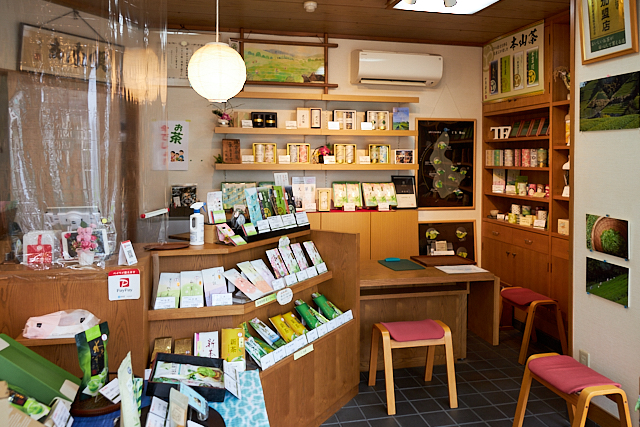
During the tour, Nakata also had the opportunity to sample various stages of tea production. The tea leaves are first in their raw state, known as “rough tea,” and then undergo different levels of “firing” to achieve varying strengths. The final products include powdered tea, stem tea, and bud tea (made from the tips of leaves and buds collected during the production of sencha and gyokuro). Each stage offers distinct flavors and aromas. Sencha is characterized by its balanced umami, sweetness, and bitterness, as well as its refreshing aroma. However, the taste can also vary depending on the water temperature and steeping time. Mr. Kojima’s recommended brewing method is to preheat a teapot, add 5–6 grams of tea leaves, pour in 180–200 ml of water at around 70°C, and let it steep for about one minute. Of course, the tea cups should also be preheated. This results in a well-balanced tea. To bring out the umami, it is recommended to lower the water temperature to around 60°C.
After experiencing the differences in tea, we also tried “gougumi,” a technique where teas of different varieties and steaming methods are blended to create a high-quality, beautiful tea.
“The aroma, taste, and mouthfeel… even small differences in quantity can make a significant difference, which is fascinating. I’d like to try blending my own tea someday, but since there’s no right answer, it’s challenging. I need to study more” (Nakata).)
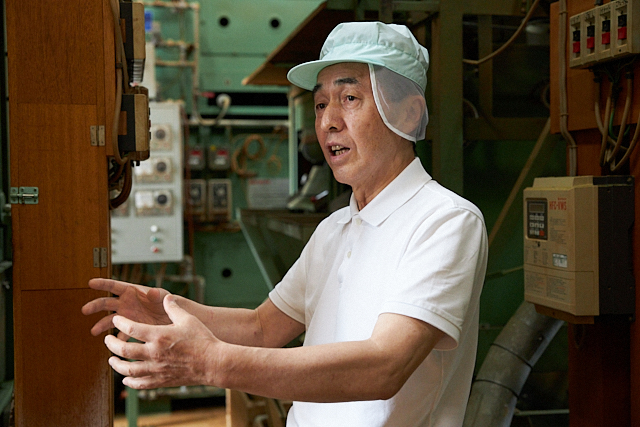
I would like to continue to provide tea that people can say is delicious, and I would like to keep the trust of those who have been drinking our tea.We also want to work hard every day so that more and more people can learn about the appeal of tea through our teas,” said Mr. Suzuki.Mr. Suzuki said.The combinations of Shizuoka tea alone are endless.The world of tea is still very deep.
